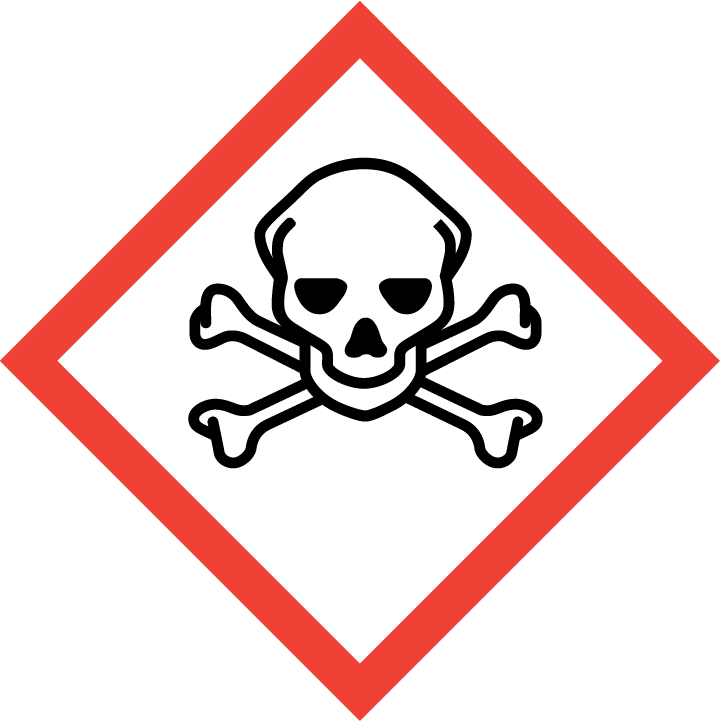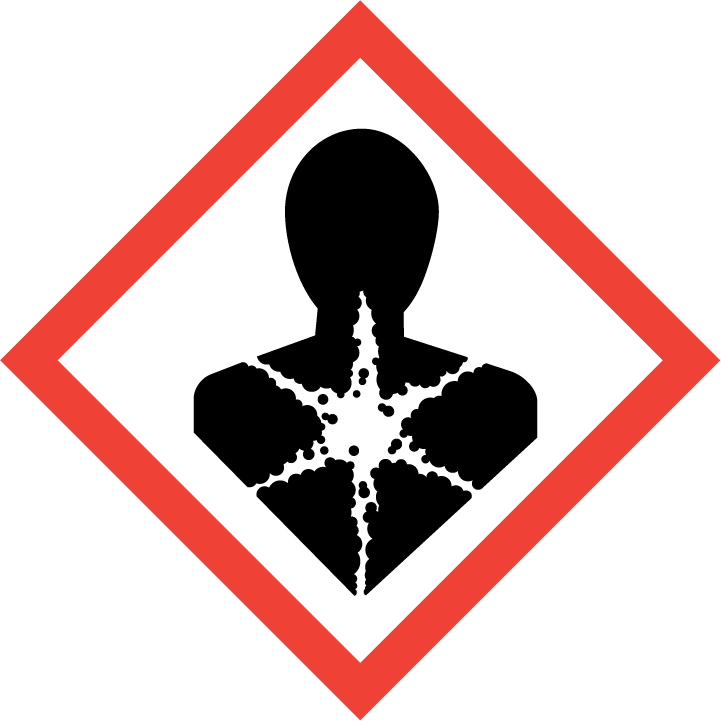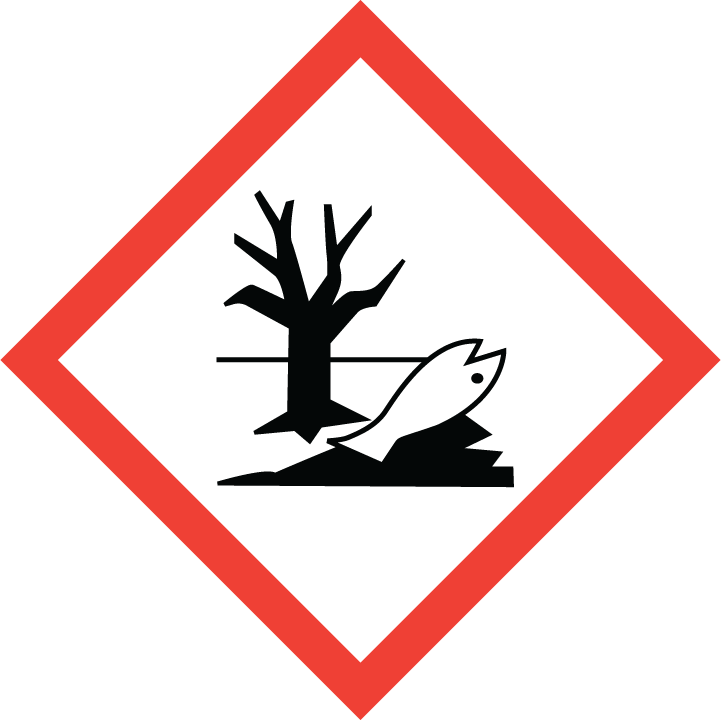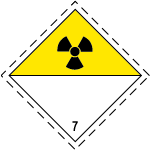SAFETY DATA SHEET
URANYL MAGNESIUM ACETATE
1. IDENTIFICATION
Product Identifiers
Product Name:
URANYL MAGNESIUM ACETATE
Other Names:
Magnesium bis(acetato-O)dioxouranate, magnesium uranyl acetate
Product Number(s):
22500, 22501, EMS22501
CAS Number:
20596-93-4
Recommended use of the chemical and restriction on use
Laboratory chemicals
Company Details
ProSciTech Pty Ltd
11 Carlton Street
KIRWAN QLD 4817
Australia(07) 4773 9444www.proscitech.com
11 Carlton Street
KIRWAN QLD 4817
Australia(07) 4773 9444www.proscitech.com
Emergency Contact Details
ProSciTech Pty Ltd
11 Carlton Street
KIRWAN QLD 4817
Australia(07) 4773 9444www.proscitech.com
11 Carlton Street
KIRWAN QLD 4817
Australia(07) 4773 9444www.proscitech.com
2. HAZARDS IDENTIFICATION
Classification of the substance or mixture
Very toxic.
GHS06: Toxic Environ Damaging GHS08: Health Hazard GHS09: Environ Damaging
GHS06: Toxic Environ Damaging GHS08: Health Hazard GHS09: Environ Damaging
Label Elements



Signal Words
Danger
Hazard Statement(s)
H301 Toxic if swallowed.
H331 Toxic if inhaled.
GHS08 Health hazard.
GHS09: Environ Damaging
H373 May cause damage to organs through prolonged or repeated exposure. Specific Target Organ Toxicity - Repeated Exposure 2
H331 Toxic if inhaled.
GHS08 Health hazard.
GHS09: Environ Damaging
H373 May cause damage to organs through prolonged or repeated exposure. Specific Target Organ Toxicity - Repeated Exposure 2
Precautionary Statement(s)
P260 Do not breathe dust/ fume/ gas/ mist/ vapours/ spray.
P264 Wash skin thoroughly after handling.
P270 Do not eat, drink or smoke when using this product.
P271 Use only outdoors or in a well-ventilated area.
P273 Avoid release to the environment.
P284 Wear respiratory protection.
P301 + P310 IF SWALLOWED: Immediately call a POISON CENTER or doctor/physician.
P304 + P340 IF INHALED: Remove victim to fresh air and keep at rest in a position comfortable for breathing.
P310 Immediately call a POISON CENTER or doctor/ physician.
P320 Specific treatment is urgent (see supplemental first aid instructions on this label).
P330 Rinse mouth. P391 Collect spillage.
P403 + P233 Store in a well-ventilated place. Keep container tightly closed.
P405 Store locked up.
P501 Dispose of contents/ container to an approved waste disposal plant.
Do not breathe dust/fume/gas/mist/vapours/spray.
Wash thoroughly after handling.
Do not eat, drink or smoke when using this product.
Use only outdoors or in a well-ventilated area.
If swallowed: Immediately call a poison center/doctor. Specific treatment (see on this label).
Rinse mouth.
P264 Wash skin thoroughly after handling.
P270 Do not eat, drink or smoke when using this product.
P271 Use only outdoors or in a well-ventilated area.
P273 Avoid release to the environment.
P284 Wear respiratory protection.
P301 + P310 IF SWALLOWED: Immediately call a POISON CENTER or doctor/physician.
P304 + P340 IF INHALED: Remove victim to fresh air and keep at rest in a position comfortable for breathing.
P310 Immediately call a POISON CENTER or doctor/ physician.
P320 Specific treatment is urgent (see supplemental first aid instructions on this label).
P330 Rinse mouth. P391 Collect spillage.
P403 + P233 Store in a well-ventilated place. Keep container tightly closed.
P405 Store locked up.
P501 Dispose of contents/ container to an approved waste disposal plant.
Do not breathe dust/fume/gas/mist/vapours/spray.
Wash thoroughly after handling.
Do not eat, drink or smoke when using this product.
Use only outdoors or in a well-ventilated area.
If swallowed: Immediately call a poison center/doctor. Specific treatment (see on this label).
Rinse mouth.
Primary route(s) of entry
Inhalation, ingestion, eye and skin contact.
Human Health
Inhalation:
Immediately call a POISON CENTER or doctor/ physician. May cause damage to organs through prolonged or repeated exposure.
Ingestion:
IF SWALLOWED: Remove person to fresh air and keep comfortable for breathing. Immediately call a POISON CENTER or doctor/physician May cause damage to organs through prolonged or repeated exposure.
Eyes:
no information
Skin:
no information
Environment
See Ecological Information (Section 12)
3. COMPOSITION/INFORMATION ON INGREDIENTS
Name
CAS No.
Content (w/w)
Classification
Bis(acetato-O)dioxouranium dihydrate
6159-44-0
>100
EC-No. : 208-767-5 Index-No. : 092-002-00-3
4. FIRST AID MEASURES
Ingestion
Never give anything by mouth to an unconscious person. Rinse mouth with water. Consult a physician.
Inhalation
If breathed in, move person into fresh air. If not breathing, give artificial respiration. Consult a physician.
Skin Contact
Wash off with soap and plenty of water. Take victim immediately to hospital. Consult a physician
Eye Contact
Flush eyes with water as a precaution
Other Information
Note to physician
Treatment: ND
Medical Conditions generally Aggravated by Exposure: ND
Treatment: ND
Medical Conditions generally Aggravated by Exposure: ND
5. FIREFIGHTING MEASURES
Suitable extinguishing equipment
Use water spray, alcohol-resistant foam, dry chemical or carbon dioxide.
HAZCHEM
No information
Special protective equipment and precautions for fire fighters
6. ACCIDENTAL RELEASE MEASURES
Personal precautions, protective equipment and emergency procedures
Steps to be Taken in Case Material is Released or Spilled: Wear respiratory protection. Avoid dust formation. Avoid breathing vapours, mist or gas. Ensure adequate ventilation
Environmental precautions
Prevent further leakage or spillage if safe to do so. Do not let product enter drains. Discharge into the environment must be avoided Evacuate personnel to safe areas. Avoid breathing dust. Methods and materials for containment and cleaning up: Pick up and arrange disposal without creating dust. Sweep up and shovel. Keep in suitable, closed containers for disposal. Environmental precautions: Prevent further leakage or spillage if safe to do so. Do not let product enter drains. Discharge into the environment must be avoided.
Methods and materials for containment and clean up
Must not be disposed together with household garbage. Do not allow product to reach sewage system. Dispose of waste according to Federal, State and Local Regulations.
7. HANDLING AND STORAGE
Precautions for safe handling
Avoid contact with skin and eyes. Avoid breathing vapours, mist or gas. Wear respiratory protection. Avoid formation of dust and aerosols. Provide appropriate exhaust ventilation at places where dust is formed.
Conditions for safe storage
Storage temperature: Room temperature.
Storage Pressure: NA
8. EXPOSURE CONTROLS/PERSONAL PROTECTION
Exposure Standards
Engineering controls
General protective and hygienic measures:
Keep away from foodstuffs, beverages and feed.
Immediately remove all soiled and contaminated clothing.
Wash hands before breaks and at the end of work.
Store protective clothing separately.
Keep away from foodstuffs, beverages and feed.
Immediately remove all soiled and contaminated clothing.
Wash hands before breaks and at the end of work.
Store protective clothing separately.
Personal protective equipment
Eye and face protection
Face shield and safety glasses Use equipment for eye protection tested and approved under appropriate government standards such as NIOSH (US) or EN 166(EU).
Skin protection
Full contact Material: Nitrile rubber, Minimum layer thickness: 0.11 mm, Break through time: 480 min Material tested: Dermatril® nitrile gloves
Body protection
Protection of Hands: The glove material has to be impermeable and resistant to the product/ the substance/ the preparation. Due to missing tests no recommendation to the glove material can be given for the product/ the preparation/ the chemical mixture.
Selection of the glove material on consideration of the penetration times, rates of diffusion and the degradation. · Material of gloves The selection of the suitable gloves does not only depend on the material, but also on further marks of quality and varies from manufacturer to manufacturer.
Selection of the glove material on consideration of the penetration times, rates of diffusion and the degradation. · Material of gloves The selection of the suitable gloves does not only depend on the material, but also on further marks of quality and varies from manufacturer to manufacturer.
Respiratory protection
In case of brief exposure or low pollution use respiratory filter device. In case of intensive or longer exposure use respiratory protective device that is independent of circulating air.
9. PHYSICAL AND CHEMICAL PROPERTIES
General information
Appearance
Crystalline powder. Color: Yellow.
Odour
ND
pH
ND
Vapour Pressure
ND
Density
NA
Boiling Point
ND
Melting Point
110c
Solubility
77g/L
Specific Gravity of Density
20890g/cm3
Flash Point
NA
Flammable (Explosive) Limits
NA
Ignition Temperature
NA
Formula
C4H6O6U • 2H2O Monecular weight: 424.15g/mol
10. STABILITY AND REACTIVITY
Reactivity
Stability: Stable under recommended storage conditions.
Chemical stability
Stable under normal conditions
Possibility of hazardous reactions
NA
Conditions to avoid
Strong Sunlight.
Incompatible materials
Strong oxidising agents.
11. TOXICOLOGICAL INFORMATION
Acute effects
Results of component toxicity test performed: Acute toxicity: LD50 Oral - rat - 204 mg/kg
Remarks: Behavioral: Tremor. Skin and Appendages: Other: Hair. Nutritional and Gross Metabolic: Changes in: Body temperature decrease.
Dermal: No data available LD50 Subcutaneous - rat - 8.300 mg/kg
Remarks: Behavioral: Tremor. Skin and Appendages: Other: Hair. Nutritional and Gross Metabolic:
Changes in: Body temperature decrease.
Remarks: Behavioral: Tremor. Skin and Appendages: Other: Hair. Nutritional and Gross Metabolic: Changes in: Body temperature decrease.
Dermal: No data available LD50 Subcutaneous - rat - 8.300 mg/kg
Remarks: Behavioral: Tremor. Skin and Appendages: Other: Hair. Nutritional and Gross Metabolic:
Changes in: Body temperature decrease.
Eye contact
No irritant effect.
Skin contact
No data available
Ingestion
No irritant effect.
Inhalation
No data available
Toxicity and irritation
Specific target organ toxicity - single exposure: No data available
Specific target organ toxicity - repeated exposure: May cause damage to organs through prolonged or repeated exposure.
Specific target organ toxicity - repeated exposure: May cause damage to organs through prolonged or repeated exposure.
12. ECOLOGICAL INFORMATION
Ecotoxicity
Toxic to aquatic life with long lasting effects
Persistence and degradability
Persistence and degradability: No data available
Bioaccumulative potential: No data available
Mobility in soil: No data available
Bioaccumulative potential: No data available
Mobility in soil: No data available
Bioaccumulative potential
No Data
Other adverse effects
An environmental hazard cannot be excluded in the event of unprofessional handling or disposal.
Chemical Fate Information: ND
Chemical Fate Information: ND
13. DISPOSAL CONSIDERATIONS
General information
Offer surplus and non-recyclable solutions to a licensed disposal company. Contact a licensed professional waste disposal service to dispose of this material. Federal, State and local laws governing disposal of materials can differ. Ensure proper disposal compliance with proper authorities before disposal.
14. TRANSPORT INFORMATION
ADG label required

HAZCHEM
No information
UN Number
UN2910
Proper shipping name
Toxic solid, inorganic, n.o.s. (Bis(acetato-O)dioxouranium dihydrate)
Transport hazard class
7
Packing group
II
Environmental hazard
No Information
Special precautions for users
No Information
Additional information
Radioactive material, excepted package-limited quantity of material ·
ADR 2910 RADIOACTIVE MATERIAL, EXCEPTED PACKAGE LIMITED QUANTITY OF MATERIAL ·
IMDG, IATA RADIOACTIVE MATERIAL, EXCEPTED PACKAGE - LIMITED QUANTITY OF MATERIAL
ADR 2910 RADIOACTIVE MATERIAL, EXCEPTED PACKAGE LIMITED QUANTITY OF MATERIAL ·
IMDG, IATA RADIOACTIVE MATERIAL, EXCEPTED PACKAGE - LIMITED QUANTITY OF MATERIAL
15. REGULATORY INFORMATION
Poisons Schedule Number
Other Information
Signal word Danger
· Hazard-determining components of labeling:
Uranyl Magnesium Acetate
· Hazard statements
Toxic if swallowed or if inhaled.
May cause damage to organs through prolonged or repeated exposure.
Precautionary statements
Do not breathe dust/fume/gas/mist/vapours/spray.
Wash thoroughly after handling.
Do not eat, drink or smoke when using this product.
Use only outdoors or in a well-ventilated area.
If swallowed: Immediately call a poison center/doctor.
Specific treatment (see on this label). Rinse mouth.
IF INHALED: Remove person to fresh air and keep comfortable for breathing. Call a poison center/doctor.
Wash contaminated clothing before reuse.
Use water spray to extinguish.
Use foam to extinguish.
Use fire-extinguishing powder to extinguish.
Use carbon dioxide to extinguish.
Store in a well-ventilated place. Keep container tightly closed. Store locked up.
Dispose of contents/container in accordance with local/regional/national/international regulations. · Chemical safety assessment:A Chemical Safety Assessment has not been carried out.
· Hazard-determining components of labeling:
Uranyl Magnesium Acetate
· Hazard statements
Toxic if swallowed or if inhaled.
May cause damage to organs through prolonged or repeated exposure.
Precautionary statements
Do not breathe dust/fume/gas/mist/vapours/spray.
Wash thoroughly after handling.
Do not eat, drink or smoke when using this product.
Use only outdoors or in a well-ventilated area.
If swallowed: Immediately call a poison center/doctor.
Specific treatment (see on this label). Rinse mouth.
IF INHALED: Remove person to fresh air and keep comfortable for breathing. Call a poison center/doctor.
Wash contaminated clothing before reuse.
Use water spray to extinguish.
Use foam to extinguish.
Use fire-extinguishing powder to extinguish.
Use carbon dioxide to extinguish.
Store in a well-ventilated place. Keep container tightly closed. Store locked up.
Dispose of contents/container in accordance with local/regional/national/international regulations. · Chemical safety assessment:A Chemical Safety Assessment has not been carried out.
16. OTHER INFORMATION
SDS preparation date
14 February 2025
Comments
References
/chrome-extension://efaidnbmnnnibpcajpcglclefindmkaj/https://www.emsdiasum.com/docs/technical/msds/22500.pdf Safety Data Sheet Uranyl Magnesium Acetate 06/09/2022
chrome-extension://efaidnbmnnnibpcajpcglclefindmkaj/https://www.tedpella.com/SDS_html/19481_sds.pdf Ted Pella Safety Data Sheet 31/08/2017
chrome-extension://efaidnbmnnnibpcajpcglclefindmkaj/https://www.tedpella.com/SDS_html/19481_sds.pdf Ted Pella Safety Data Sheet 31/08/2017
This Safety Data Sheet (SDS) has been prepared in compliance with the Preparation of Safety Data Sheets for Hazardous Chemicals Code of Practice February 2016. It is the user's responsibility to determine the suitability of this information for adoption of necessary safety precautions. The information published in this SDS has been compiled from the publications listed in Section 16: to the best of our ability and knowledge these publications are considered accurate. We reserve the right to revise Safety Data Sheets as new information becomes available. Copies may be made for non-profit use.